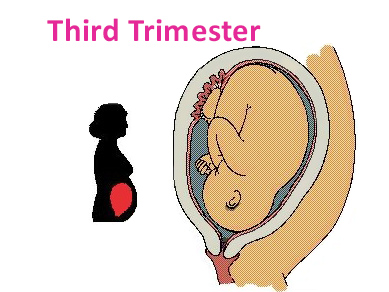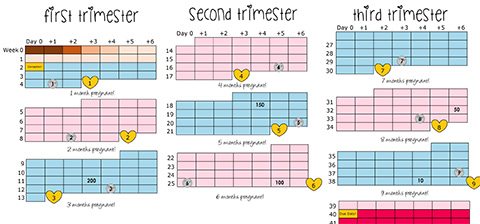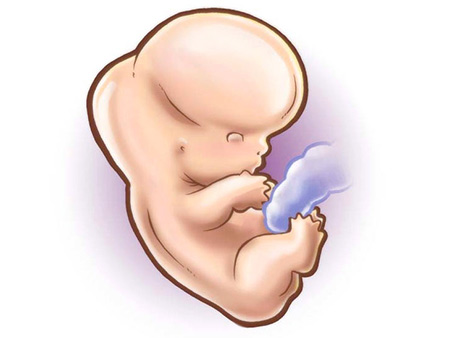Second trimester
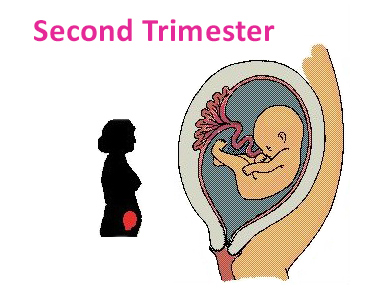 The second trimester is an exciting time as you see and feel the fetus changing and growing as well as watching your own body change. For many women, this is the most enjoyable phase of pregnancy. You will enjoy a sense of well-being and an increased level of energy. As you prepare for the birth of your baby, you will find that you get excited and involved in decorating the baby’s room, shopping for baby items, and just experiencing the incredible things that are transpiring.
The second trimester is an exciting time as you see and feel the fetus changing and growing as well as watching your own body change. For many women, this is the most enjoyable phase of pregnancy. You will enjoy a sense of well-being and an increased level of energy. As you prepare for the birth of your baby, you will find that you get excited and involved in decorating the baby’s room, shopping for baby items, and just experiencing the incredible things that are transpiring.
One of the most exciting moments of the second trimester will be when you first feel the fetus move.
Because your body is under tremendous change, it is vital that you eat healthy foods, drink plenty of water, and get lots of rest. You may experience heartburn and constipation. But eating a healthy diet with plenty of fiber will help with both of these symptoms in most cases. If you do not find relief, talk to your doctor to see what alternatives you have.
You will generally gain between 10 and 14 pounds during the second trimester, and the fetus itself will gain two of those pounds. The placenta will take over production of hormones needed by the fetus, and as a result, you will begin to feel better as the hormones level off. As soon as you feel more energetic and better overall, you will be enabled to enjoy your pregnancy to the fullest as a new round of changes is just around the corner.
Typically, a sonogram will be performed if you have not yet had one. This will allow the doctor to check on the fetus’ development. If you want to know the sex of the baby, the fetus will probably be developed enough to tell. In the past few years, a new type of sonogram has been developed called the 3D Sonogram. This amazing technology breakthrough now provides parents with a unique 3D picture of the fetus that shows every feature in clear form.

Second trimester symptoms
Specific symptoms can be associated with this trimester. Some women experience one of these symptoms while other women experience all of them:
- Backaches. Usually mild and located in the lower area of the back due to the increased weight on your spine.
- Fuzziness. Thinking changes occur such as forgetfulness, difficulty in concentrating on details, and an increased chance of misplacing things like the car keys.
- Weight Gain. This is the classic symptom that is most noticeable. Enjoy the added attention you will get from friends and family. If the weight gain is making you feel ambivalent, buy yourself something nice or new maternity clothes to bolster yourself as your waistline disappears.
- Leg Discomfort. This may appear due to the increased weight and the shift in your center of gravity. Varicose veins may also show. Try to be as comfortable as possible, wearing low-heeled shoes and putting your feet up whenever possible.
- Minor Symptoms. Might include bleeding gums, nasal congestion, heartburn, and bloating. As the second trimester nears completion, you may experience mood swings and find that you overreact or cry easily in certain situations.
At the beginning of the second trimester you may wake up to realize that something is missing – nausea. Not only can you down a meal, but your long-lost energy returns.
Your uterus is not yet big enough to cause some of the uncomfortable symptoms that may happen in the third trimester. On the other hand, it may be depressing that you feel huge and your clothes don’t fit, but no one seems to know that you are pregnant. Don’t worry, this stage is short-lived: Sometime during this next month, a total stranger will make your day by inquiring, “When are you due?”
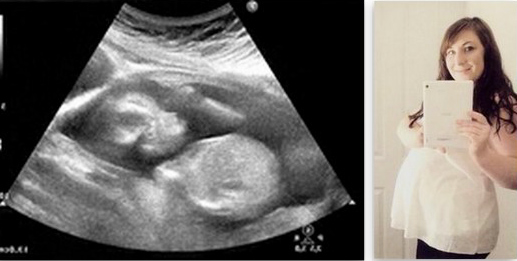
By 22 weeks, your fetus weighs nearly one pound, and measures 10 and one-half inches head to toe. He or she more closely resembles a baby. Eyebrows and eyelashes begin to grow. And these teeny tiny pair of ears can actually tune in to mommy’s conversations.
Braxton Hicks contractions
Periodically, some women may feel their uterus tightening. These contractions are harmless, called Braxton Hicks. Braxton Hicks contractions, also known as false labor, are sporadic and completely normal. But if they are regular and occur more than four times an hour, call your practitioner. Differentiating between Braxton Hicks and the real thing is sometimes difficult. It’s a smart idea to familiarize yourself with the signs of preterm labor so your practitioner can use medical means to delay labor until a safe time.
By 24 weeks, rapid eye movement has begun. Weighing in at one pound, six ounces, and measuring 11 and one-fourth inches, head to toe, your baby now has a five to twenty percent chance of survival if born today. By the time your fetus weighs two pounds, odds of survival soar to seventy percent, although preemies are more susceptible to a host of problems.
Dental problems
Because of an increase in maternal estrogen and progesterone, pregnant women are more susceptible to dental problems. Don’t miss out on your six month cleaning. Although most practitioners believe that dental X-rays are safe, it’s probably best to delay them, if possible, until after the birth.
By week 28, you’ve reached the end of the 2nd trimester. Your little one measures 13 inches head to toe and weighs two pounds and four ounces. Your baby’s eyelids, which have been fused shut, begin to open. From this point forward, your baby will spend much time observing the womb.

The fetus will grow in size very rapidly during the second trimester and you will soon be able to distinguish between feet and hands as the fetus moves and presses against you while kicking and stretching.
The second trimester has been a great journey. Between your baby’s daily exercise routine and your burgeoning belly, you have tangible evidence that you are, indeed, carrying life inside of you. It’s hard to believe that in just a little over two and a half months, you will be holding that evidence in your arms!




